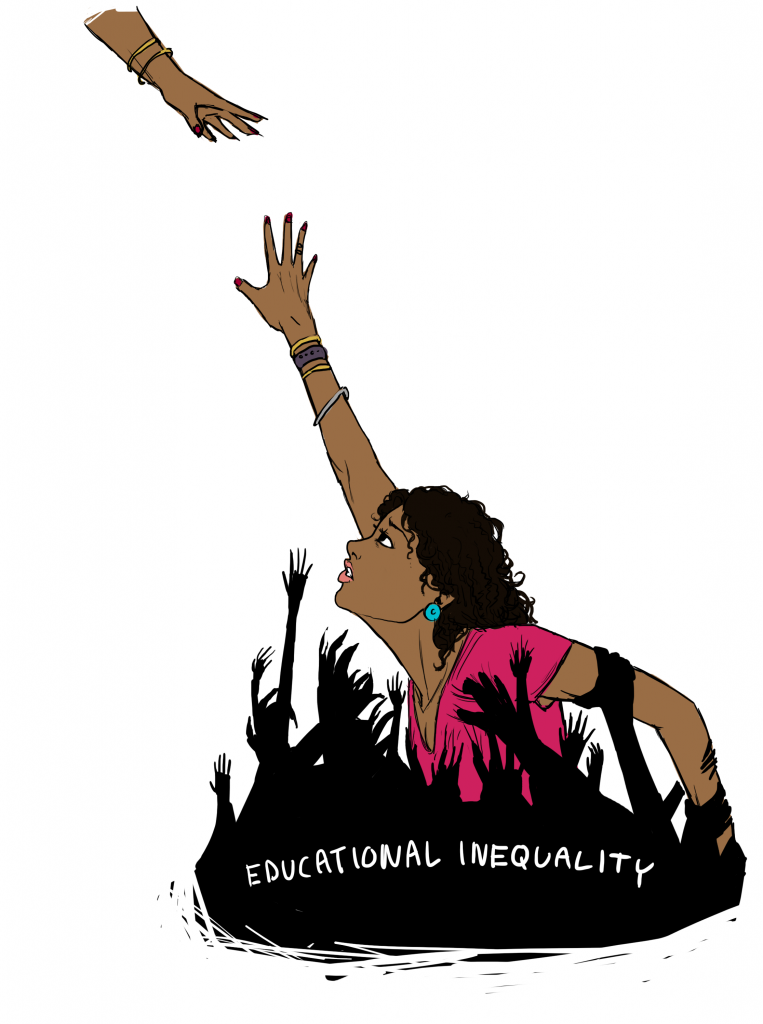Walking into
Donovan Dining Center, I really did not know what the Promising Practices Conference had in store for me. Truthfully, I was almost intimidated to go to the workshops because I
was not exactly experienced in STEM education. After going to both workshops and listening to the keynote, I was immediately put at ease and was well informed about STEM
education.
 |
| Bethune Elementary/Middle School |
The first workshop I attended was “Finding the STEM in the
Urban Core”. The two women who led the workshop are educators at Bethune Elementary/Middle School in Detroit, Michigan. Antoinette Pearson, the
principle of Bethune School, was extremely enthusiastic to discuss her school’s
contribution in an educational revolution.
Mariama Kurbally, a graduate from RIC and second grade teacher, assisted
Antoinette in the workshop. The two
women discussed how the school has altered their curriculum to revolve around
STEM education. Bethune School has recently added a SMART lab in their school
in which students are able have a hands on learning experience. In the SMART
lab, the students are truly responsible for how they learn. They discussed that
STEM really focuses on the “how”- how to think, how to learn, and how to teach.
It provides the students, as well as the teachers, a different insight into
learning. A STEM education keeps the
students engaged in activities because it's more than just learning. It
encourages students to become active learners because they are not just
sat at a desk with a teacher dictating information. Antoinette and Mariama
explained that the SMART lab is extremely effective because students are able
to learn, practice, and apply what they are taught. They also emphasized the how significant it
has been to incorporate STEM education in their school because urban schools
typically neglect offering students an opportunity like this. They truly
believed that STEM education is essential in providing urban school students’ skill
sets that allow them to be successful in their education and later on in life.
The second workshop I attended at the Promising Practices
event was “Teach Like a Designer! Design Thinking for Educators”. Adrienne
Gagnon, the executive director and founder of DownCity Design, led the
workshop. In this workshop, she discussed how a design thinking process in the
classroom can truly revolutionize the way education runs. She explained that incorporating design
thinking into the classroom would engage students in their work. Students would be more motivated if they
could use creativity as a method of learning rather than traditional methods.
She explained that design thinking allows there to be communication,
collaboration, and persistence in the classroom. The students can openly discuss the topic
they are learning and provide their own insight to get a better understanding
of it. She revealed that it will be an adjustment for teachers because they
have to give up some freedom into the class because it is student led but it
will be extremely beneficial in the end.
Later on in the workshop, she introduced ways that educators can incorporate
the design thinking process into the classroom. I found one of the method,
called “Brain Dash”, to be really interesting. In this exercise, students are
put into teams and almost perform a sort of academic relay race. They run up to a piece of paper and quickly
put down their ideas. She explained that it’s an innovative way for students to
voice their opinion because they do not have a chance to second guess
themselves. Students feel freer and comfortable to put down their ideas. I
found that this idea would be really useful in a classroom and I would even
enjoy doing it. After thinking about a lot more about the workshop, I realized
that the design thinking process she wants us to incorporate into the classroom
connected to Ira Shor’s empowered education.
The techniques Adrienne Gagnon discussed would provide a classroom
experience that students could become active and critical learners. The design
thinking process allows students to shy away from the “one-way transmission
of rule, and knowledge from teacher to students” (Shor 12) that is found in
traditional schooling.
To finish of the Promising Practice event, Dr. ChristopherEmdin spoke about #HipHopED(ucators) STEMming the Tide of Disinterest in Education.
I found that the keynote address was the most interesting part of the entire
event and I felt as though I gained a lot from it. Dr. Emdin is truly a
powerful and passionate speaker that I was completely engaged in his presentation. In his
keynote address, Dr. Emdin stressed that educators are solely responsible for
the reason students have a disconnect to school subjects, especially math and
science. Students often feel that STEM classes are to hard for them because
they cannot relate to the structure. Dr. Emdin suggests the only way for students to become comfortable in these areas and want to learn is to move away from traditional teaching styles. Although
we have benefitted from traditional education, we need to provide students with
alternative models for effective teaching. We need to provide them with
something that truly speaks to them. Dr. Emdin discusses his idea of Hip Hop
Education and that it can be useful in STEM education because it can help to
relate their education to something they are truly passionate about. Hip Hop
Education allows students to see that the skills they need to create a rap song
are the same skills they need for science or mathematics.
I decided to look a bit further into Dr. Emdin's work and I found a short video clip that does a good job of summarizing what Hip Hop Education provides for urban students.







